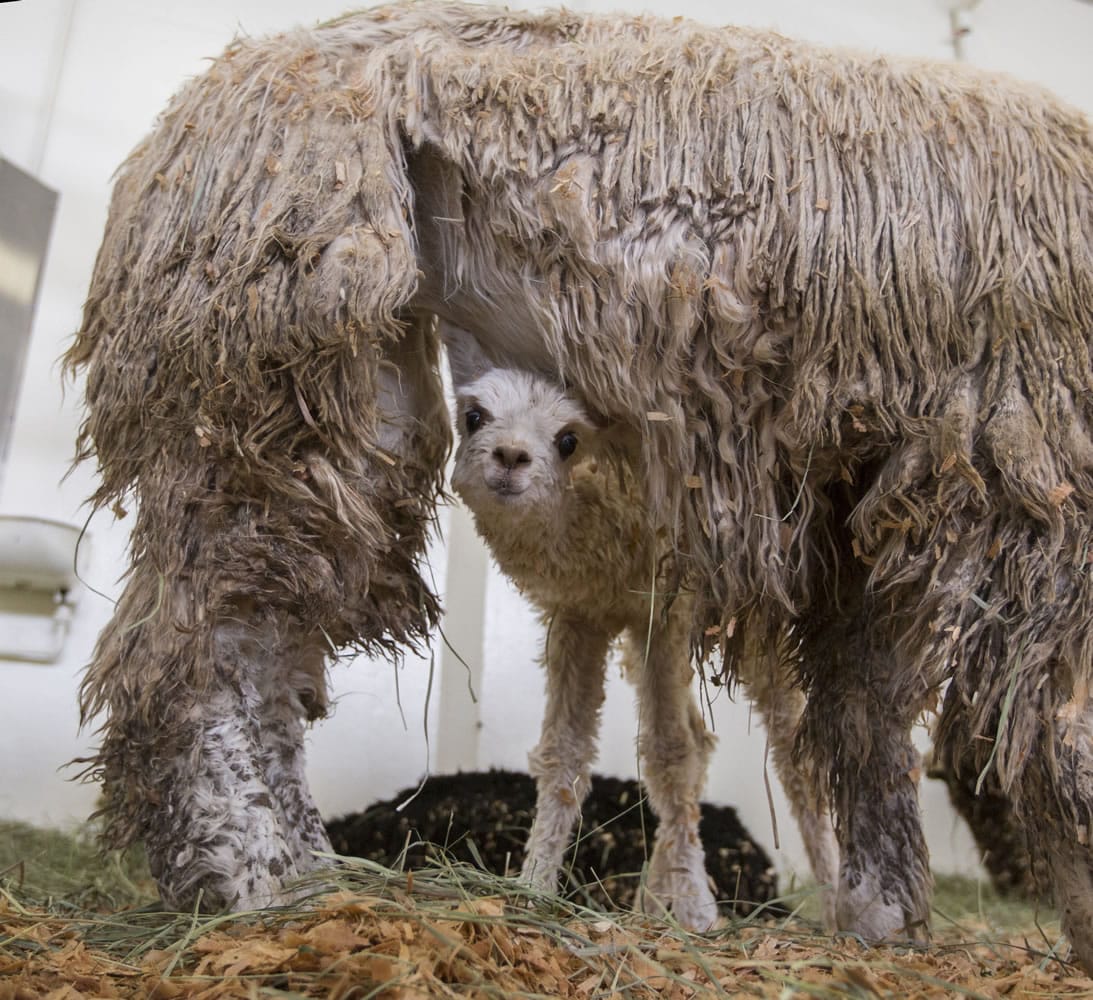CORVALLIS, Ore. — Here, at the large-animal hospital at Oregon State University, in stalls with wood shavings on the ground, are the alpacas that look at you with those innocent eyes.
They evoke more sympathy from observers who know what they’ve gone through. According to authorities, they were starving to death.
There are 15 that need special care, and an additional 160 that are well enough to be in outdoor pens in a field owned by the school.
On this afternoon last week, Shari Bond and Jackie Glover have driven down from Tenino, Thurston County, to begin finding homes for the 175 emaciated alpacas that were seized by the Polk County Sheriff’s Office, southwest of Portland.
It’s the biggest job ever for the nonprofit Cross Creek Alpaca Rescue, which the two women founded four years ago.
“Look, you can see her backbone; it’s two fingers,” says Bond.
Bond means this alpaca is so gaunt that even after more than a month of being fed by the Sheriff’s Office, her spine is still protruding, when in a healthy animal it wouldn’t. But at least it’s better than in late December, when the sheriff got a court order and took over the alpacas at Jocelyn’s Alpaca Ranch in nearby Falls City.
Bond saw the alpacas at that time, and she says some had backbones that stuck up four inches, “and you could see ribs and hip bones.”
The sight of alpacas is familiar to those taking a country drive in the Pacific Northwest.
Washington and Oregon, with respectively 20,000 and 16,000 registered alpacas, are second and third in alpaca population in the U.S. (Ohio is No. 1 with 28,000).
The first alpacas arrived in the U.S. from the Peruvian high plains in the mid-1980s. The animals were touted for their lustrous, hypoallergenic fiber.
Money was to be made, not just in the fleece, but with the big profits in breeding stock that reached into the tens of thousands of dollars per animal. In 2005, industry figures showed the average auction price for a female alpaca was around $70,000, and for a male in the low $30,000s.
A TV commercial around then by the industry featured a retirement-age couple having coffee and happily watching their herd of alpacas.
But one agricultural economics expert likened the alpaca business to the Dutch tulip mania of the early 1600s in which people mortgaged their homes to invest in the bulbs — an unsustainable enterprise. Spokespeople for the alpaca industry say it is still very much viable.
Prof. Richard Sexton of the University of California, Davis, co-authored a 2005 paper titled, “Alpaca Lies? Do Alpacas Represent the Latest Speculative Bubble in Agriculture?” The conclusion that he and co-author Tina Saitone reached was: yes.
“As an asset, they were worthless,” he says about alpacas.



